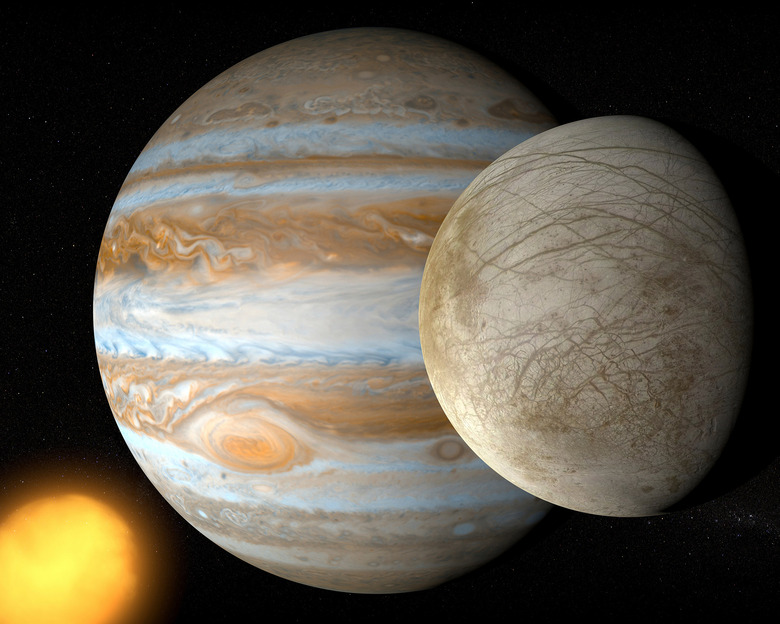Scientists Believe There Could Be Hidden Alien Life On Jupiter's Moon
Scientists believe there could be hidden alien life on Europa. The icy moon that orbits Jupiter is at the center of a new study. The researchers who published the study in Nature Communications say that subterranean pools of salty water could be promising sites to look for signs of alien life.
Signs of alien life on Europa could be hiding beneath the surface
Jupiter's icy moon is roughly 2,000 miles wide. That makes it slightly smaller than Earth's moon. Scientists began to suspect that there could be alien life on Europa after observations with ground-based telescopes revealed evidence of an ocean possible located 10 to 15 miles beneath the surface of the moon.
It's an intriguing idea, especially given the make-up of the moon. Europa is covered in giant parallel ridges similar to those seen on Greenland's ice sheet. As such, scientists believe that the Jovian moon could also hold shallow pools a short distance below its surface. Especially if the giant ridges that extend across the surface formed similarly to those found in Greenland. If, and that's a big if, that is the case, those pools could help circulate chemicals necessary for life to exist.
Of course, we're not talking about the kind of alien life on Europa that we need to talk to. At best, we're most likely looking at something small and biological in nature. This could be something as simple as bacterium. Even if that's the case, it would prove that life is possible beyond the confines of our planet.
A mysterious, icy moon
Despite everything we know about Europa, the frozen moon continues to throw mysteries at us. For one, there are these massive double ridges that extend for hundreds of miles across the surface. The ridges are estimated to reach up to 300 meters (1,000 feet) high. They're separated by valleys that are at least half a mile wide. It is the cause of these ridges that could be hiding alien life on Europa.
The current standing belief is that the ridges on Europa formed similarly to how Greenland's did. Shallow pools of subsurface water froze and fractured the surface again and again. As this happened, it created the ridges that we see now. The scientists believe that these subsurface pools may be the key to finding alien life on Europa.
There is one intriguing question we still have to prove, though. In Greenland, the water that creates these ridges comes from nearby lakes. However, the surface of Europa is completely frozen. As such, they believe the water rises from an underground ocean. Scientists believe this ocean is 40 to 100 miles deep. They also believe this ocean holds twice the amount of water as Earth's oceans.
If this is the case, then finding alien life on Europa may be closer than ever. That's because NASA plans to launch the Europa Clipper mission in 2024. The mission should shed some light on how the ridges formed, as well as help provide more details about the Jovian moon.

